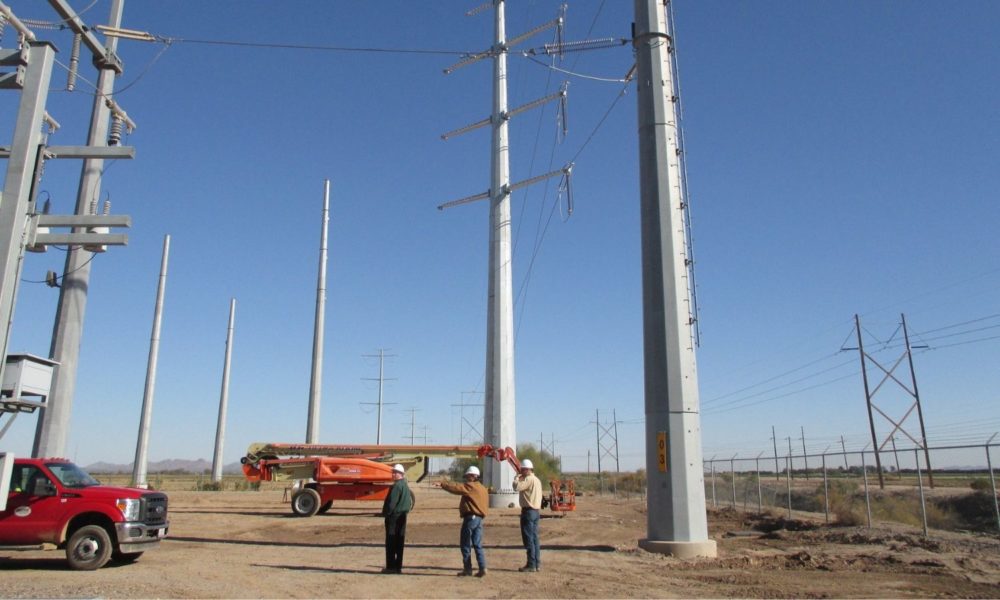Replacing fossil fuels with renewable energy from wind and solar will depend on upgrading the electric power grid, which is currently plagued by planning delays and gridlock. To address such problems, the Federal Energy Regulatory Commission (FERC), which supervises utility company and grid operator planning, is in the midst of proposing new transmission planning rules. While these reforms are open for discussion, it would be useful to take a close look at the five regional US grid operators’ recent practices to see what FERC should include in its new rules.
The grid operators need transmission plans that account for old plant retirements and integrate new policies that drive windfarm and solar plant construction. The planning base case is not a do-nothing case, and common-sense scenarios that are responsive to the expected pace and scale of change should prevail.
Recent efforts by two grid operators, the Midcontinent Independent System Operator (MISO) and the California Independent System Operator, show what can be accomplished with grid planning. Planning for both of these regions builds on a repeated practice of looking ahead to more renewable energy in the supply mix and less fossil fuel energy due to plant closures.
Midwest (Sort of) Continues a Proud Tradition
MISO’s current Transmission Expansion Plan calls for more than $3 billion in upgrades, spread over a region with 42 million people. MISO’s planning has struggled to keep up with the pace of change since large amounts of wind energy became available beginning in 1999. In recent years, MISO has been working with scenarios that recognize “the transmission system no longer serves the same resources for which it was designed, and transmission upgrades are needed to enable integration of new resources.”
MISO gets our support in recognition of its recent request that FERC approve cost sharing enabling an expected $10-billion package of additional transmission with economic benefits 2.6 times greater than the cost. With such planning and regulatory cost-allocation efforts, imperfect as they are, MISO is demonstrating the persistence and problem-solving required to move forward with the present light-handed FERC supervision of utility transmission investment and the persistent case of Entergy’s monopolistic behavior.
California Works with Planning Scenarios
The California ISO plans, both its annual Transmission Plan and its first 20-Year Transmission Outlook, build on state policy and procurement efforts. California has long set policy affecting retirements and procurement of new supply. The Transmission Plan reflects inputs and assumptions about year-to-year changes driven by the state.
The California ISO has taken planning to a new level with its draft 20-Year Transmission Outlook. California policy work is years ahead of other grid regions when it comes to decarbonizing the grid, electrifying transportation, integrating solar, and managing plant closures. In California ISO’s words: “The 20-Year Transmission Outlook provides a long-term conceptual plan of the transmission grid in 20 years, meeting the resource and electric load needs aligned with state agency input on integrated load forecasting and resource planning, as the basis for further dialogue.”
PJM Takes a Look at Renewable Planning
In November, PJM—the grid operator for 13 states from New Jersey to North Carolina and west to northern Illinois—published a transmission report describing the renewable supplies for meeting the region’s renewable electricity standards and offshore wind plans. PJM worked with the five coastal states via one-on-one meetings to determine relevant planning scenarios.
PJM has only recently considered the states’ energy policies as relevant to its FERC-authorized role as transmission planner for its region. When PJM released the transmission report, it surprised stakeholders with its approach and results because PJM planning currently relies only on already announced power plant owners’ binding commitments to close or open power plants. This short-sited approach constrains what information PJM considers, and its plans are exceedingly modest. With this new report and recognition of state policies, PJM is just starting stakeholder discussions about reforming its planning process.
What PJM Saw In Its First Look
PJM’s report developed five scenarios for the build-out to meet state requirements. By planning for a set of changes, rather than taking each change incrementally without forethought, the report estimated costs ranging from $627 million in the short-term to between $2.16 billion and $3.21 billion for long-term scenarios. In mid-March, I wrote that PJM and Illinois needed to work on changes to the grid and power supply to meet the Illinois Climate and Equitable Jobs Act carbon reduction goals. The 2021 law allows, but does not require, PJM to plan ahead because various fossil fuel plants must reduce and then cease emissions by a specific date.
What New England Sees
The markets in PJM and ISO-New England (ISO-NE) share origins and a mistaken belief that planning for change will undermine existing power plants’ profitability. These two grid operators also have lagged behind others in hosting wind and solar despite the widespread push for cleaner electricity across their regions. This led New England states to prod ISO-NE to start making planning reforms. In December, FERC approved an additional, supplementary ISO-NE transmission planning process for state-requested, scenario-based analysis to help policymakers, utilities and stakeholders understand grid needs for replacing fossil fuels with clean energy. ISO-NE is now unfolding an estimate of transmission investments needed to enable decarbonization efforts for 2035, 2040 and 2050.
SPP & MISO Show “You Won’t Know Until You Try”
The last of these recent initiatives demonstrates a first attempt at solving grid problems that cross the boundary between the Southwest Power Pool (SPP) and MISO. Late in 2020, these two grid operators set aside their own long-standing reluctance to embark on a joint planning process, and have identified, as the CEOs of the two put it, “transmission needed to remedy historical challenges facing generators near the shared boundaries between our two Regional Transmission Organizations (RTOs). These challenges have caused projects to drop out of the study process because costly network upgrades are triggered.”
This joint process is unusual because it looks at the benefits from interconnection-related transmission, and for a long time the RTOs were unable to navigate the obstacles of comparing their data and assumptions. Now, the challenges are still there, but the engineering is done. The lesson here is one for all grid operators: They began the necessary work without having answers to all the difficult questions, but found ways to go forward.
Looking to FERC For Planning Reforms
Transmission has always been a monopoly with regulations meant to ensure cost and service are reasonable and non-discriminatory. I looked at these new plans to see what is possible, and where some best practices might be applied to regions that are less engaged in planning.
Transmission customers, both for supply and demand, benefit from MISO considering expanded benefits in its multi-value plan, the California ISO provision of transmission to meet state requirements, and the joint effort by SPP and MISO. In other regions, the grid operators have not drafted new transmission plans that can be implemented, or worse, ignored the benefits of that planning.
When FERC inquired about current transmission planning practices, it received more than 170 sets of comments from customers and industry calling for planning reforms. Many of these comments raised issues that many wrongly assumed had been fixed by prior FERC utility transmission planning reforms, and all planning issues have real impacts on the electric power system.
Past FERC reforms expected that grid operator collaboration and information-sharing would respond to public needs and consumer interests. In practice, the grid operators’ selection of planning criteria, assumptions and scenarios ultimately determine what gets built, when, and who pays. The current FERC rules allow inappropriate grid operator practices and provide opportunities for abuse and discrimination, and the results muddy understanding of consumer costs for transmission and energy.
To achieve the consistent, widespread planning that is hinted at by the examples described here, FERC and state governments need to make changes. Inside and outside the regional grid organizations, grid modernization cannot wait for corporate self-interest in a monopoly setting. Practices within a utility and across utility boundaries should not exclude and discriminate to protect outdated assets and utility fiefdoms. Planning is key, and regulators must expand the scope of needs, solutions and measured benefits that planners count to modernize the grid.

